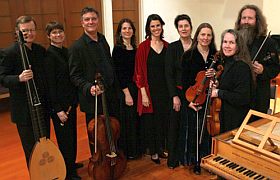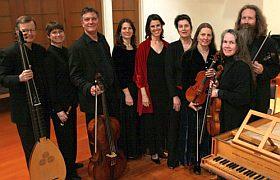
For Magnificat’s latest concert set, the presumptive diamond in the rough was a genre rather than a composer. Alessandro Scarlatti’s Venere, Amore, e Ragione (Venus, Cupid, and Reason) is a “serenata” — a term with slippery historical connotations but that in Scarlatti’s day denoted a festive, cantatalike work associated with important occasions, from grand state affairs to more intimate celebrations. Its text, by the Roman poet Silvio Stampiglia, details a dispute between Venus and Reason involving the latter’s newfound influence over Cupid, with Venus conceding in the end that love guided by reason yields better lovers.
Although Scarlatti wrote nearly two dozen serenatas during his lifetime, these pieces tend to play second fiddle to his better-known operas and solo-voice chamber cantatas. Compounding the obscurity of Venere, Amore, e Ragione is a lack of information about its original performance context. (Educated guesses place the work around 1706, in association with the composer’s election to the Roman literary academy/cultural institution Accademia dell’Arcadia.)
Of course, the act of reviving seldom-heard works loses some luster if the piece itself lacks charisma. Hearing Magnificat’s performance on Friday in Palo Alto’s First Lutheran Church, I was struck by the generic, repetitive quality of much of this music. Certainly this can be attributed, at least partially, to the relentless alternations of recitative and arias and to standardized da capo aria structures typical of Baroque practice. But even allowing for these structural rigidities, Scarlatti’s music comes off as merely serviceable: pleasant but largely uninspired.
Persuasive Proponent of Scarlatti
All this should take nothing away from Magnificat’s actual performance, which lived up fully to this ensemble’s usual high standards. If any ensemble were to advocate for Scarlatti’s serenatas through compelling performances, this is the one. Magnificat’s sterling trio of vocalists and sextet of instrumentalists approached the piece with great elegance, imparting a sense of grace, fluidity, and intimacy. Vocal qualities were exquisitely matched to the characters portrayed, with soprano Jennifer Paulino’s warm, vibrant sound perfectly suited to the sensual Venus. Jennifer Ellis Kampani’s bright, clarion soprano ably captured the youthful Cupid, while the rich, magisterial quality of mezzo-soprano Jennifer Lane offered a fine counterbalance as the more grounded Reason.Amid Scarlatti’s pervasive stylistic homogeneity, select moments of variety proved to be the evening’s highlights. Reason’s aria “Quella ninfa d’accese pupille” (That nymph with inflamed eyes) featured Lane in a zestful performance, emphasizing the nymph’s “beautiful eyes” and “passionate splendor.” The exclusive use of low-sounding instruments for accompaniment offered an appealing contrast, even if intonation issues occasionally marred the texture.
The performers handled isolated instances of florid coloratura expertly. Kampani’s confident declamation of “D’amor l’accesa face” (If the burning torch of love), in perfect counterpoint with violinists Rob Diggins and Jolianne von Einem, invigorated the pyrotechnics of this paean to love blended with reason. All three vocalists triumphed in the serenata’s finale, “Impari ad amar bene” (Learn to love well), coming together in a virtuoso display of vocal agility, impeccable blend, and fine balance, right up to the surprisingly inconclusive final chord.
The instrumental consort, solid throughout, shone brightest in a dance movement that perfectly captured the rustic character of nimble nymphs and shepherds in jubilant celebration. Especially engaging were the delightful string portamentos and the ever-steady harmonic support from the dynamic duo of harpsichordist Hanneke van Proosdij and theorbist David Tayler.

